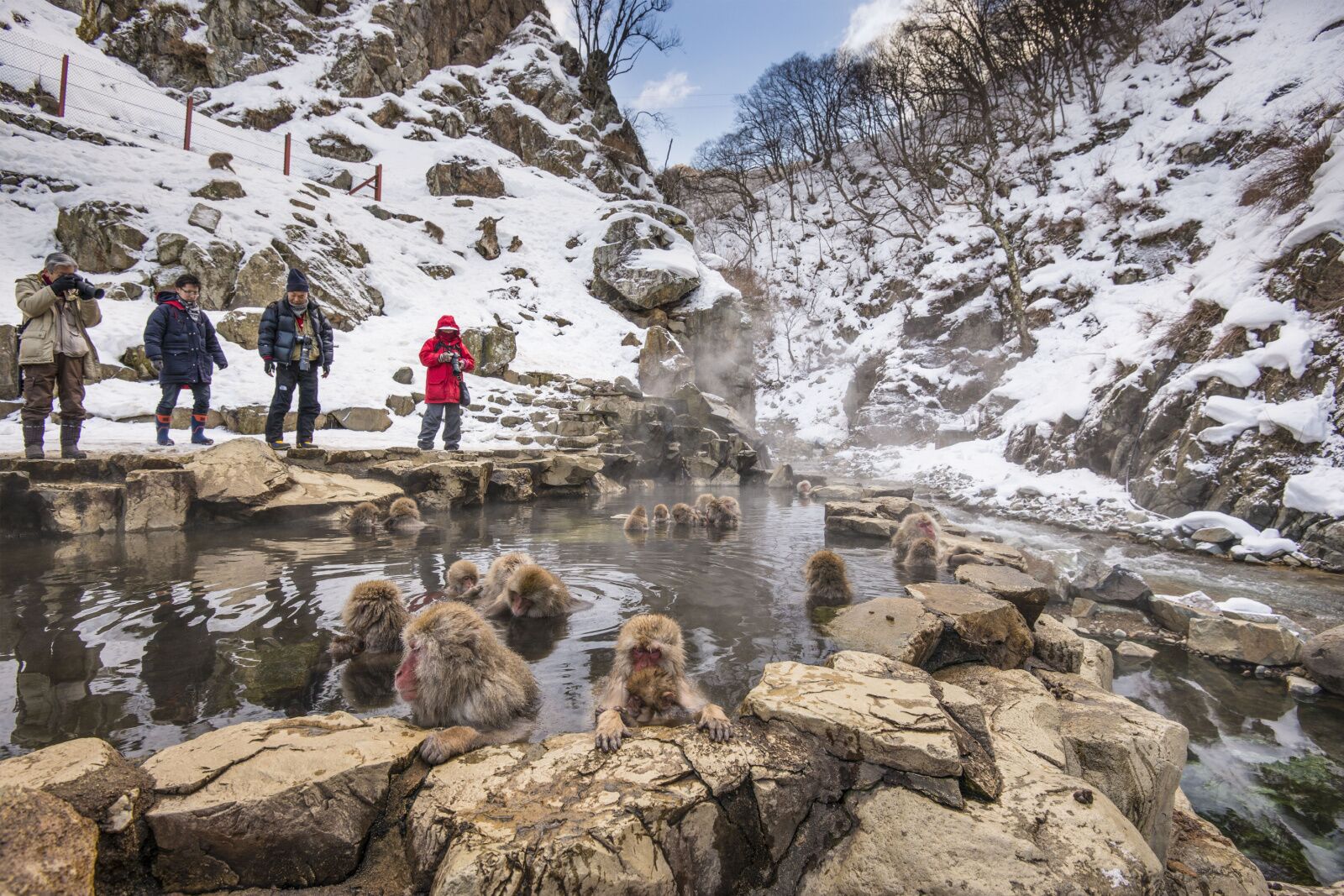The Japanese macaque, more commonly known as the snow monkey, is the most northern-living primate (except humans, of course) in the world. Japanese macaques live in a variety of habitats across three of the four main Japanese islands, but you probably recognize them as the hot-tubbing primates playing in the thermal pools at Jigokudani — a behavior which has brought them notoriety. They’re why the area is protected as Jigokudani Monkey Park.


Jigokudani Monkey Park: How to Visit Japan's Snow Monkeys
Jigokudani Monkey Park in Nagano and is part of Joshinetsu Kogen National Park — known to locals as Shigakogen — in the Yokoyu River valley. Covered in snow for a third of the year, Jigokudani translates to “Hell’s Valley.” That’s not because it’s a terrible place to visit, but rather, for the thermal vents that populate the frozen ground, surrounded by steep cliffs and hostile forests.
Okay, so maybe it’s not the Bahamas, but that hasn’t stopped the Japanese macaque from calling it home and sanctuary. During the day, the monkeys descend the steep cliffs to lounge and groom each other in the onsen (hot springs). They return to their forest haven at night, only to make the trek again the next day.
The park was established in 1964 when the monkeys were seen bathing in the small onsens, and larger pools were constructed for them. Since the park attendants feed the monkeys, they can be seen in the park year round. It’s privately owned by the Nagano Dentetsu Railway Company.
How to get there
The best way to get to Jigokudani Monkey Park if you’re not staying in Nagano is by a combo of train and buses — but don’t worry, it’s easy. First, you’ll want to take the train from wherever you are to Nagano Station. If you’re staying in Tokyo, it’s only a 90-minute train ride on the Shinkansen line. But if you’re staying somewhere else, it’ll probably be a little longer (but still probably covered by a JR Rail Pass).
Exit the train station in Nagano and walk to the attached bus station to get on the bus bound for Jigokudani Monkey Park. It’s usually bus 3, but check the JR Rail website to confirm in advance. After about 35 minutes, you’ll arrive at the stop for Jigokudani Monkey Park. From there, it’s a roughly one-mile walk along a slightly uphill and snowy path to reach the park gate. At the gate, you’ll pay the admission fee of 800 yen (roughly $6, as of spring 2023), and you’re in. The park gate also has a gift shop and tea house, which is a great place to warm up if you visit in winter.
That said: the park is open year-round, and the snow monkeys are in the springs year-round. But you’ll have to visit in winter if you want photos of the monkeys against a snowy backdrop. That’s also when you’ll see the most snow monkeys actually in the springs, rather than just walking around the vicinity.
Rules of Jigokudani Monkey Park

Photo: Sean Pavone/Shutterstock
Monkeys are smart creatures, and there are some rules in place to keep them safe.
- No selfie sticks or monopods. This is for several reasons, not the least of which is that the monkeys will take them
- Do not feed the monkeys. Ever. Even if it’s cute. It’s detrimental to the monkeys and punishable by steep fines.
- The monkeys are used to people, but it’s still best to get out of their way if they come near you. Don’t try to pet them (have you seen their teeth?)
- You can’t get in the pools with the monkeys. If you’re hankering for a soak, make reservations at the Korakukan Ryokan, just a short walk away.
A note about Nagano

Photo: Ekkalak Ngamjarasvanij/Shutterstock
There’s plenty to do in Nagano, in case you wan to spend the morning at Jigokudani Monkey Park and afternoon walking around the city. You’ll find fabulous Japanese restaurants serving soba noodles (something the city is known for), gorgeous temples like Zenkoji (the third-largest in Japan), and even a castle (Matsushiro Castle). If you visit the monkeys in February, try to time your visit for the Nagano Lantern Festival, which celebrates the start of the 1994 Nagano winter Olympics.